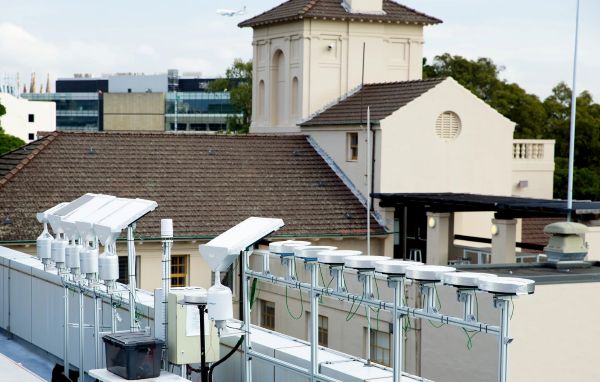Scientists Develop Nanoengineered Paint That Cools Buildings and Generates Water from Air

In a groundbreaking leap for sustainable building technology, researchers in Australia have unveiled a nanoengineered polymer coating capable of cooling buildings passively and harvesting water directly from the atmosphere — all without using electricity.
Developed by scientists at the University of Sydney in collaboration with Dewpoint Innovations, this futuristic paint-like coating could redefine the way modern buildings manage energy efficiency, thermal comfort, and water sustainability.
“This technology not only advances the science of cool roof coatings but also creates a low-cost, decentralized source of clean water — a critical need in the face of climate change and global water scarcity,” said Professor Chiara Neto, a leading nanoscientist at the Sydney Nano Institute.
How the Innovation Works
The breakthrough polymer paint reflects up to 97% of sunlight and radiates absorbed heat into the atmosphere, keeping surfaces up to 6°C cooler than the surrounding air — even under direct sunlight.
Unlike traditional white paints that rely on ultraviolet-reflective pigments like titanium dioxide, this new coating utilizes a porous nano-structured polymer that enhances durability, reduces glare, and improves performance over time.
As the surface cools, moisture in the air condenses naturally, forming droplets that can be collected for use — mimicking the way steam forms on a bathroom mirror.
In real-world rooftop tests conducted at the Sydney Nanoscience Hub, the coating harvested up to 390 milliliters of water per square meter per day — enough for a 12-square-meter surface to supply one person’s daily drinking needs.
From Cooling Roofs to Climate Resilience
This innovation arrives at a pivotal time as global cities grapple with rising temperatures and depleting freshwater reserves.
Buildings account for nearly 40% of global energy use, much of which goes to air conditioning. By replacing traditional roofing with this reflective, self-cooling surface, energy consumption could be dramatically reduced, easing the pressure on national grids and lowering carbon emissions.
Meanwhile, the built-in water harvesting feature introduces a new frontier in urban sustainability, potentially helping arid regions and water-stressed communities secure local freshwater sources without large-scale infrastructure.
“Imagine rooftops that not only stay cooler but also produce their own clean water. That’s the promise of this technology,” said Professor Neto.
BRANDECONOMY ANALYSIS: The Future of Smart Buildings Lies in Passive Innovation
The implications of this Australian innovation are far-reaching for architecture, construction, and environmental technology.
- Energy Efficiency Reimagined:
The paint’s ability to maintain cooler surface temperatures could reduce building cooling costs by up to 30%, offering an affordable alternative to energy-intensive HVAC systems. - Decentralized Water Systems:
With urban populations growing and water scarcity intensifying, this dual-function paint could pioneer localized water capture systems in homes, greenhouses, and public infrastructure. - Smart Urban Design Integration:
When combined with green building technologies — such as solar panels and thermal insulation — this coating can transform conventional structures into self-regulating, energy-neutral ecosystems. - Scalable and Sustainable:
Because the polymer does not depend on rare materials or energy inputs, it can be manufactured cost-effectively and applied widely across developing and developed nations alike.
This technology represents a new chapter in material science — where everyday surfaces become active agents of environmental transformation.
For architects, urban planners, and sustainability advocates, it’s not just a paint — it’s a climate adaptation tool poised to change how cities survive and thrive in the 21st century.











